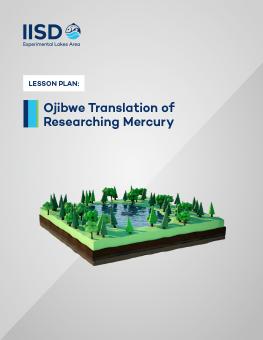
Lesson Plan: Translating Research on Mercury into Ojibwe
Discover how we translated a whole video on the impact of mercury on fresh water into Ojibwe.
In this lesson plan, we take you through how we took a video about the impact of mercury on fresh water in English and transformed it into Ojibwe (below)—all with the goal of empowering Ojibwe-speaking people to better understand the threats to their freshwater supplies and to take action.
This lesson plan includes a full transcript of the video and then breaks down the sentences, explores the grammar, and explains how we created new words. The end of the video includes suggested learning activities.
Participating experts
You might also be interested in
Northwest Ontario Side Story: IISD Experimental Lakes Area Annual Report 2022-2023
This year's annual report is a celebration of all things creative at the world's freshwater laboratory, from the science to music, photography and theatre.
Freshwater connectivity can transport environmental DNA through the landscape
A new study conducted at IISD-ELA found that the movement of water between freshwater bodies can transport eDNA which complicates the question of how accurately it can be used to monitor species.
Microplastics now pervasive in Great Lakes, with 90% of water samples surpassing safe levels for aquatic wildlife: new studies
Data spanning the last ten years reveal that the Great Lakes basin is widely contaminated with microplastics, with potentially dangerous consequences for the wildlife that live within.
These nearly invisible organisms help clean Lake Tahoe's water. Here's how they do it
Plankton are not just a diabolical mastermind on a Nickelodeon show about a sponge who lives under the sea. Lake Tahoe is filled with them—the good kind. Tahoe native zooplankton are making a comeback in the more than 21-mile long lake, helping it look the clearest it has in 40 years. A comeback because until now, the microorganism's population significantly decreased after it's primary predator, the Mysis shrimp, was on the rise, according to previous Sacramento Bee reporting.